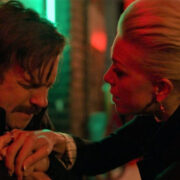The Beginner’s Guide: Silent Film
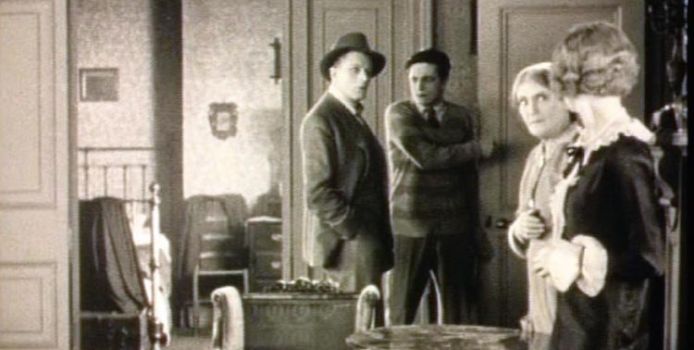
Shane Bliss, a freelance journalist, runs his own classic movie…
When The Artist won Best Picture at the 84th Academy Awards, it became only the second silent film to win that award. That’s because silent films were already almost passé by the time the first ceremony was held. The end of silent films was swift and fast, their production gone in almost no time. But before that time, the silent era produced a wealth of highly advanced and unique films that hold up to this day.
Bereft of sound, silent films made other technical and creative advancements right from the start. George Méliès’ A Trip to the Moon (1902) displays the creative ways impressive special effects were created. Even at that early date, some prints were hand-colored, the first way color was brought into films.
Although short films were typically what was made at first, by the early to mid 1910s, features became increasingly common. One of the earliest American feature pioneers was D.W. Griffith, one the earliest masters of the feature, and an innovator with advanced camera work.
Of all silent film genres, comedies are often the ones that hold up the best today. They were, though, the last holdouts in making the transition to feature films. Comedy shorts continued to be made through the decades that followed, but it wasn’t until the 1920s that features were even common in the genre. Major silent comedians like Charlie Chaplin, Buster Keaton and Harold Lloyd all started with shorts before making the transition to features. Others, like Ben Turpin, managed to stay successful throughout the entire 1920s while rarely making features.
By the mid to late 1920s, silent films were arguably at their artistic peak. These were not creaky, melodramatic stationary films. These were films that featured ingenious direction and fine acting. Those who aren’t fans of silent films probably haven’t seen these later, brilliant silent films. The only thing that they are bereft of is sound. From all other artistic measures, they are often extraordinary. The zenith of silent films proved to be very short lived, though. Soon enough, silent films would be a thing of the past.
The Jazz Singer was released in 1927, and it changed the course of history in the process. The film featured song and dance man Al Jolson delivering musical numbers through the use of sound technology. It is forever given credit as the first talking picture, but the film is actually only a partial talkie. While there are songs and dialogue throughout the film, other portions are still silent and use title cards for dialogue.
The company responsible for the sound was known as Vitaphone, and this wasn’t actually even the first film they produced with sound. Don Juan opened one year earlier, but with only music added to the film and with synchronized sound effects. A short film with dialogue opened the film. The technology involved worked essentially as a sound-on-disc process. All necessary sounds were recorded and played on a giant disc that amplified throughout the theater. Sound-on-film technology didn’t come until later.
Anyone who has seen Singin’ in the Rain has actually seen a fairly accurate portrayal of what followed in the wake of the Jazz Singer craze. Film did change almost overnight. Silent films ready to be released were halted so talking scenes could be added in. In most cases, this was actually to the detriment of the quality of the films, as sudden switches from silent to sound were often more than a little jarring to the viewer.
By 1929, silent films were completely passe. The change came in under two years, and in the immediate time afterwards the quality of films ended up suffering. Singin’ in the Rain portrayed the reasoning behind this as well: the new technology limited films. New sound cameras were massive, and had to be placed in giant soundproof booths, as otherwise the camera itself would cause too much noise.
The size and noise of the cameras weren’t the only thing limiting movement either. As Singin’ in the Rain showed, microphones had to be placed in stationary areas, with the actors forced to stick to areas where the microphones were able to pick up sound. The final years of silent films brought about robust films were directors could be innovative with camera use and storytelling. The beginning of sound ended that for a time, bringing films back to more stationary and limited possibilities. As technology improved, the films did too.
The following six films cover numerous genres and represent the powers of silent films at their peak. Silent films created amazing stories without the use of sound, and these are some of the best examples for new viewers.
1. Sherlock Jr. (1924)
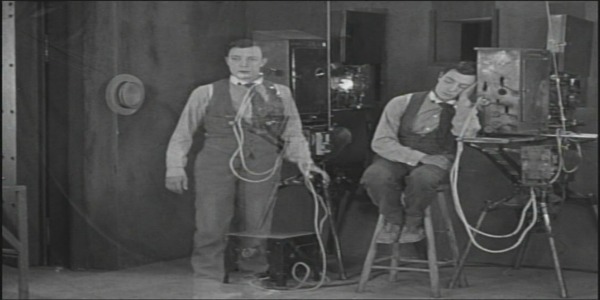
Of all the genres, comedies from the silent era are probably the most easily accessible to new audiences. Not only are they still funny without feeling dated, they bring a brand of physical comedy rarely seen today. When it came to ingenious physical comedy, Buster Keaton represented the pinnacle and Sherlock Jr. is him at his best.
At a brisk 44 minutes, there’s barely any time for a breather in Sherlock Jr. It starts out somewhat slow, but following an amazing technical scene where Keaton leaps into a movie screen, the pace never lets up again. Although hapless and hopeless in real life, once Keaton’s character jumps into the movie screen he is a brilliant detective, ready to track down criminals.
The physical comedy and stunts that follow are not only hilarious, but jaw-dropping too. Many just don’t seem physically possible, but they are in the hands of Keaton. Not only are there technical filmmaking moments throughout, but some of the most elaborate stunts in film history can be found here as well. Few comedies are both shocking and hilarious, but this one delivers in both categories.
2. Sunrise: A Song of Two Humans (1927)

Sunrise took home three Oscars at the inaugural Academy Awards. None were more deserving than Best Cinematography. Indeed, this film may be one of the most visually stunning ever put on the silver screen. Never is the camera static or dull. Dramatic moments are created constantly through movement and elegant use of light. Scenes of great special effects are handled well, especially given the time period. If it were only for these visuals alone, Sunrise would be worth seeing.
But there’s so much more to it than that. All of it is wrapped around a compelling and unique drama of human relationships. Janet Gaynor (who won the Best Actress prize) and George O’Brien expertly play a married couple thrown asunder literally and figuratively when another woman becomes involved. With a gripping dramatic tale attached to visuals that are second to none, Sunrise is the total package.
3. Wings (1927)
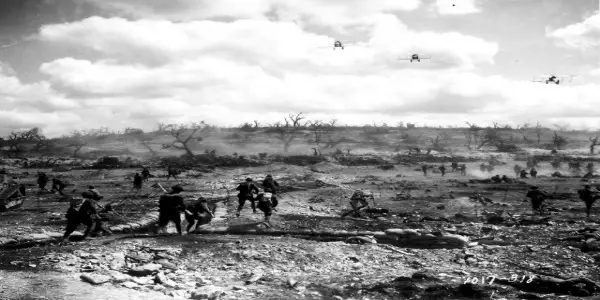
The very first Best Picture winner, Wings is part love story and part war story. It is its portrayal of war that makes the film timeless. Taking place during World War I, it is first and foremost an important look about what that war was like. The war is captured through exquisite battle sequences that are stunning to this day. This film is a prime example that even in silent films, great dramatic effects were achieved without the use of such things as CGI. The stark battle scenes stick with the viewer, and these strong visual elements alone make the film worth watching.
The film also boasts a strong cast, one which carries the personal and romantic moments of the film. Clara Bow, the “it” girl and one of the biggest box office draws of the time, is the female star. Alongside her are Charles Rogers, Richard Arlen and a young Gary Cooper in a role that helped make him a star.
4. The Lodger (1927)
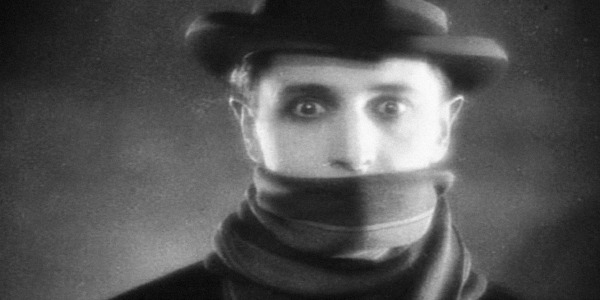
Alfred Hitchc*ck’s career started in the age of the silent film. From 1925 to 1929, Hitchc*ck made a total of nine silent films. Some of these are atypical of Hitchc*ck’s more famous work, but The Lodger fits right in with his classic suspenseful works. This is classic Hitchc*ck in the silent era.
Based loosely on the Jack the Ripper killings, a series of murders in London are at the center of the story. A landlord comes to believe that her new lodger just might be the savage killer. There’s hallmarks of typical Hitchc*ck motifs throughout, along with a whodunit that he didn’t often explore.
It is also incredibly suspenseful, with Hitchc*ck often going out of his way to accomplish this through his typical inventive camera work. For some, this is considered the first “true” Hitchc*ck film. It can certainly be placed alongside some of his greatest works in terms of suspense.
5. Lonesome (1928)
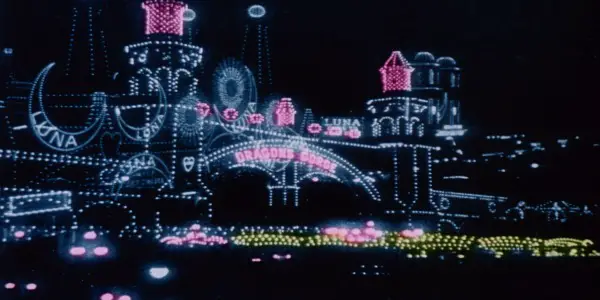
Lonesome was released right at the cusp of sound’s takeover of film. As such, there are two different versions: a silent one, and a version with a couple talking scenes thrown in. Those scenes are better left ignored, as they aren’t of high quality and drag down the rest of the film. Everything aside from those scenes, including the film’s use of color, is spectacular.
At its core, Lonesome is a simple love story. Two people meet one day by chance at the beach, and before long they take an interest in each other. Then a romantic date at an amusement park goes wrong when the two get separated. Once separated, it’s a race against time to see if they can find each other before it’s too late.
Glenn Tryon and Barbara Kent are immediately charming, an ideal couple to root for throughout the film. When they have fun throughout the scenes in the beach and the amusement park, it feels like an incredible amount of fun. That’s also accomplished through the frenetic direction of Paul Fejos. The fun in the amusement park never slows down. There is a fun, lively party going on, and the viewer is part of it the whole way. Few films capture the sheer fun of the period like this one does. But it’s also touching too, leading to a climax that is equally frenetic in a much different way.
6. City Lights (1931)
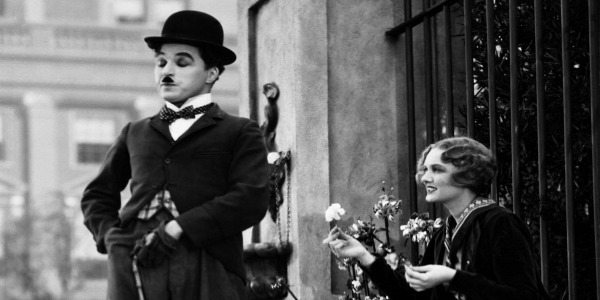
This film’s release date should seem a little odd given the information above. Yes, this came out a few years after silent films went out of fashion. Not a fan of the idea of talking pictures, Charles Chaplin didn’t make one until 1940. Chaplin did, however, use sound to his advantage with a beautiful original score and sounds for comedic effect.
And although the film is funny, it represents what makes Chaplin so great: it’s not just funny, it’s also incredibly touching. Chaplin, playing his familiar Tramp character, falls in love with a blind girl (Virginia Cherill) and finds himself willing to do anything to help her and her family. Some of the complications are hilarious, and others turn out to be heartbreaking. Both Chaplin and Cherill tell the story more in their facial expressions than any line of dialogue could.
It all concludes with one of the most brilliant endings you’re likely to ever see. Chaplin, already a master at creating emotions throughout, sends the viewer on an emotional roller coaster in the final moments. Very few films equal this one in terms of heart.
——-
These are just a few films that could serve as a good introduction for those unfamiliar to silent films. Sadly, the vast majority of silent films are now lost. It has been estimated that only 25% of the films made in that time remain to this day. But among those films remaining are dozens and dozens of others worth exploring. There are options for finding other silent films.
Kino Lorber, Criterion and DVD companies regularly restore and release the highest quality silent films available. And for those in countries with the channel, Turner Classic Movies regularly features at least one silent film a week on Sundays.
Do you have any silent films you’d recommend to beginners? Leave recommendations in the comments!
(top image: The Lodger – source: Gainsborough Pictures)
Does content like this matter to you?
Become a Member and support film journalism. Unlock access to all of Film Inquiry`s great articles. Join a community of like-minded readers who are passionate about cinema - get access to our private members Network, give back to independent filmmakers, and more.
Shane Bliss, a freelance journalist, runs his own classic movie blog (classicfilmhaven.wordpress.com) and is a contributor to a book on The Thin Man series.





